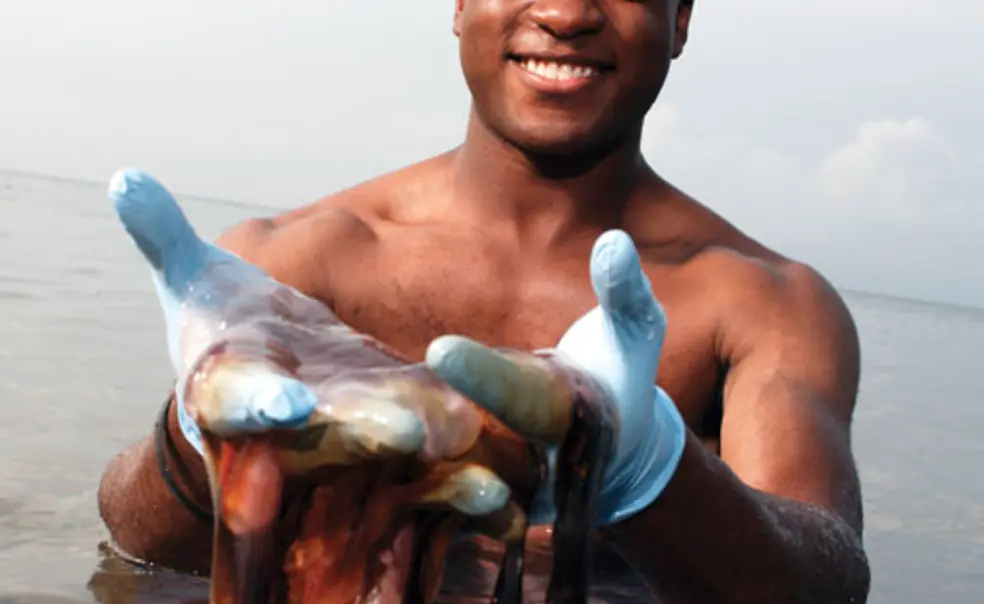A jellyfish engineer
Stinging creatures inspire John Dabiri ’01 to design new technologies
Dubbed the “jellyfish engineer” by Popular Science magazine, which named him one of its “Brilliant 10” last year, Dabiri studies the design features at work in jellyfish and other fish species to solve engineering problems.
Jellyfish “swim very efficiently,” says Dabiri, who studies the way jellyfish move through water, pushing off their own wake by generating vortex rings — similar to the donut-shaped whirls of smoke a cigar makes. The physics and engineering behind a jellyfish’s propulsion mechanism provides insight that is helping Dabiri design more energy-efficient underwater vehicles and wind power turbines, and a method of diagnosing early heart disease.
For his work developing a 4-foot-long underwater vehicle that is 50 percent more energy-efficient than conventional propeller-driven vehicles and that could be used to monitor ocean temperatures or for unmanned surveillance in enemy waters, Dabiri won a Presidential Early Career Award for Scientists and Engineers. President Obama will present the award at the White House this fall.
The propellers on Dabiri’s vehicle have been modified to create a wake similar to that of a jellyfish, in that they generate vortex rings. Dabiri, an associate professor of aeronautics and bioengineering at the California Institute of Technology, has tested the vehicle in his lab, which has a 130-foot tank that he says is like “a long race track in a water tank.” The presidential award brings with it a five-year, $1 million research grant from the Office of Naval Research that he will use to test the vehicle in the ocean.
Dabiri also is applying biological systems to modern engineering by using principles evident in the way fish school to create wind turbines that require substantially less land. Currently wind turbines need to be spread out so that the wind field from one does not negatively affect another. When fish swim in a school, however, each individual fish uses the swirling currents generated by the other fish in the group to swim more efficiently. With that in mind, Dabiri is using blades that rotate around a vertical instead of horizontal axis and is arranging the turbines to take advantage of the wind fields.
Finally, Dabiri’s study of jellyfish one day could help with the design of a noninvasive method of diagnosing early heart disease. Movement of blood in the left part of the heart generates vortex rings, and Dabiri found that the blood flow in a person who is in the early stages of heart disease looks like the less energy-efficient vortex rings generated by a jellyfish when it is scrambling away from attackers.
Dabiri took an unlikely path to bioengineering. The son of Nigerian immigrants who settled in Toledo, Ohio, he thought he would end up in traditional engineering, designing cars or helicopters, and he majored in mechanical and aerospace engineering at Princeton. Having gone to a small Baptist high school that taught creationism, he didn’t even like biology. But a summer internship at Caltech after his junior year at Princeton — when he began studying the pulsating action of jellyfish under the direction of Mory Gharib, a Caltech professor who later became his doctoral adviser — opened his eyes to the engineering principles at work in biological systems. “The possibilities are sort of endless in terms of being able to take what you know from a very simple biological system and apply it to problems people care about, like energy and health,” says Dabiri.
Although he regularly travels around the world to study different jellyfish in their natural habitat, he must recruit graduate students to don scuba gear and head below the surface to take measurements, while he serves as deckhand on a boat or land. Dabiri never learned to swim, despite lessons.













No responses yet